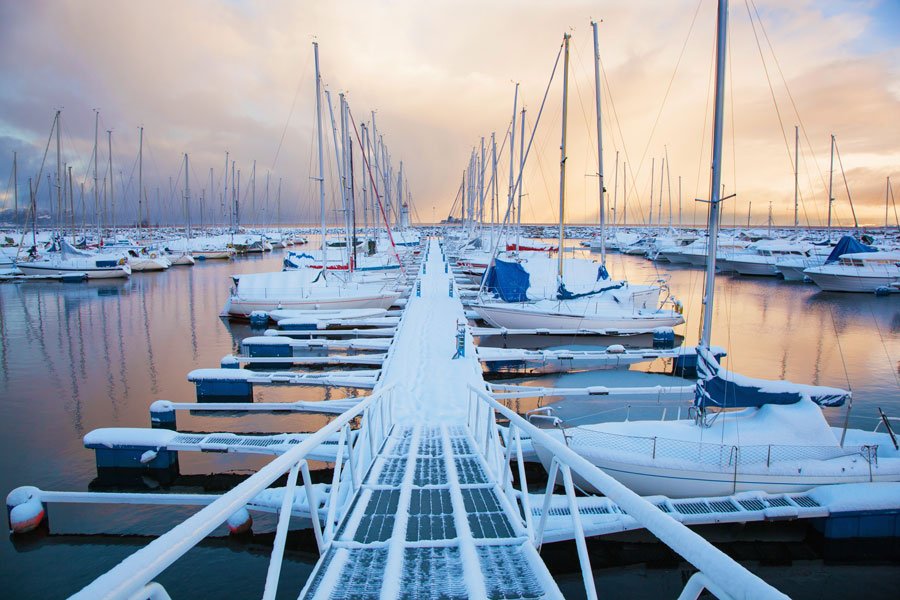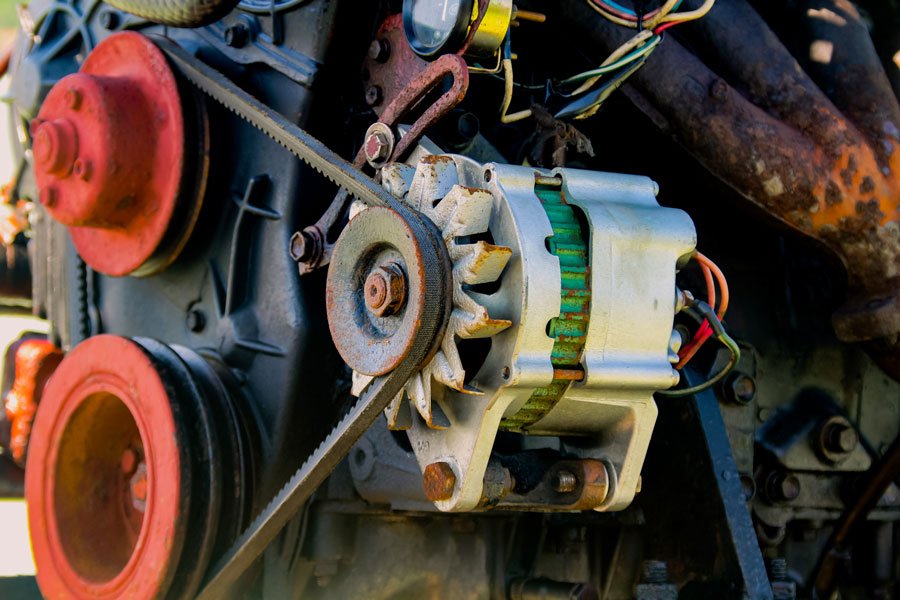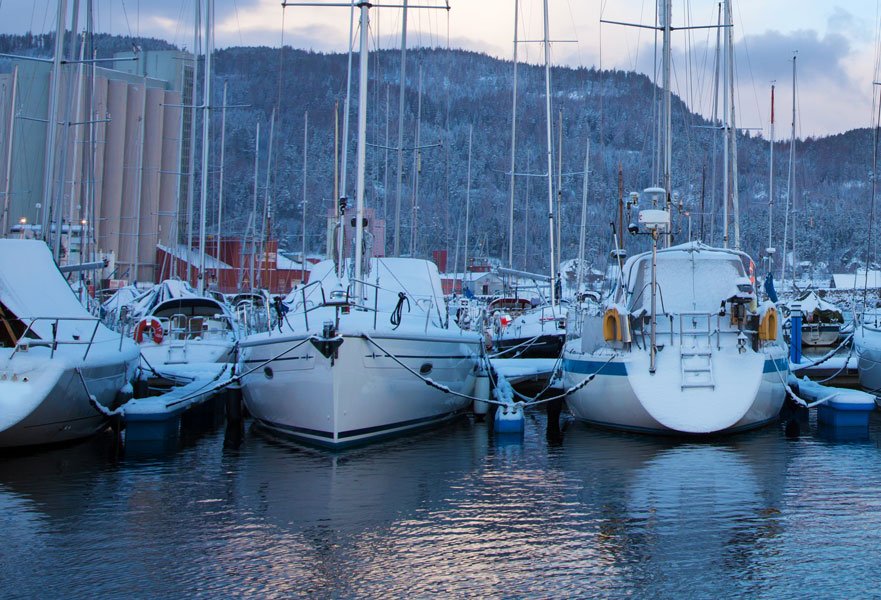We offer comprehensive boat winterization and pre-season preparation services, so you won’t have to worry about preparing your boat for winter or experiencing any potential damage. Proper winterization is crucial to avoid expensive repairs and delays when the boating season begins again.
Our team takes the worry out of the equation, providing meticulous care to protect your investment and make sure your boat is in top shape for the next adventure.
Don’t let winter catch you off guard. Trust Ignition Marine to handle your boat’s winterization and pre-season prep with precision and expertise.

It also includes fogging the engine to help protect it from rust and corrosion, as well as cleaning and lubricating the parts of the engine that need it.
Clean the boat thoroughly inside and out.
Remove all food and garbage from the boat.
Drain all the water from the boat, including the freshwater tank, bilge, and toilets.
Add antifreeze to the boat's cooling system, as well as to the toilets and sink drains.
Change the oil and filter in the boat's engine.
Lubricate all moving parts on the boat, including the steering system, throttle, and shifter.
Cover your vessel with a tarp or shrink wrap to protect it from the elements.
Store your boat/yacht, boat or watercraft in a safe, dry place.
Our team of experts at Ignition Marine can help you with proper boat motor winterization to prepare your vessel for the winter months.
We offer various services, including boat winterization, engine fogging, oil changes, and more.
If you’re in North Vancouver or Lower Mainland, BC and need help winterizing your boat, call us today to book an appointment.

You consider winterizing and putting your boat away as winter approaches to protect it from the ravages of the weather. In regions where the climate is still warm, winterization is also referred to as “long-term storage.”
To prevent damage from potential long sitting periods and cold weather conditions, a boat must be properly winterized. If you don’t get your boat winterized, the repairs you will need to do when the new season starts could end up costing more.
These rust buildups obstruct the passageways, which causes the boat engine to heat up. Serious fuel-related issues might result from untreated fuel. There may also be further issues, like seal failure and gear case damage.
Once the winter’s over, it’s time to start thinking about getting your boat ready for the new season. But before you take it out on the water, there are a few things you need to do to make sure it’s in good condition.
We offer pre-season preparation services to get your boat ready for the upcoming season. This includes inspection, repairs, maintenance, cleaning, and polishing.


We are your one-stop service centre for all of your boat winterization and pre-season preparation needs.
Contact us today to learn more about our services.

When outboard engines are left tilted in the down position, they must be drained of all water to prevent condensation. To avoid this problem and ensure your engine stays dry while not being covered or enclosed under something heavy like a tarp will also help with ventilation.
Experts have said a thousand times that “the best way to winterize an outboard is simply by using it.” This couldn’t be further from true if you live in a place where engines are usually operated frequently enough for their normal operating temperature range, and long periods of inaction won’t cause any problems with your powerplant!
One final tip for the season- change your lower unit and powerhead oil and visually inspect it to ensure there hasn’t been any water intrusion. Put that boat in storage with fresh fluids!
Stern drives are more complex than outboard engines because they require water removed from the block and driving unit. You may also need antifreeze running through it all and making sure everything’s coated with enough for harsh winter weather.
There are quite some differences between the different makes and models, which can be significant, so you’ll want to consult your owner’s manual.
Inboard treatments are similar to stern drives without a drive system. They are typically done by opening petcocks and removing plugs to drain them into an antifreeze solution that will keep everything running smoothly while at sea.
All gas-powered engines require individualized care and attention, whether you have a small fishing boat or an ocean liner.
When you’re done fixing the ethanol problem, change all of your engine’s filters and separators. The key here is “change.” Sometimes people will remove their fuel/water filter to pour out any excess water before reusing it.
Always replace the canister when pouring out water from your filter to prevent dirt or debris that was in there from getting drawn into other system components. This way, you avoid damaging those parts.
Plumbing systems are the next things most boat owners will need to consider.
If you have a water heater on your boat, be sure that both hot and cold faucets draw antifreeze through it. In some cases, this may not always work in bypassing the unit so drain separately if necessary.
You’ll also want to pump out your holding tanks and ensure the antifreeze flows through them. If you have a portable MSD, be sure that it’s removed from the boat so as not to have any surprises waiting for next spring!
There are a few important notes you should know about winterizing your boat. The hull and deck of the vessel can make or break its performance, so be sure to protect them with some preventive measures this season:








Purchasing a boat or yacht is an investment in your future adventure on the water. Don’t go with just any vessel – trust Ignition Marine to provide you with the best boat or yacht that will give you the experience of a lifetime. Talk to our knowledgeable sales team today to find the perfect vessel for you.
Send us your queries, and we will get back to you right away!